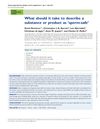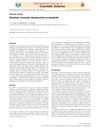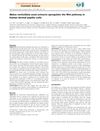Study on Applicability of Microbial Test Method of Hair Cosmetics
January 2014
TLDR Current microbial test methods for hair cosmetics need revision due to strong bacteriostasis.
The study investigated the effectiveness of microbial test methods for hair cosmetics, using the pour plate method, membrane filtration method, and pathogen detection method. It found that the recovery rates for test strains like Aspergillus and Candida albicans were over 70% with a 1:100 dilution using Rose Bengal medium, while Staphylococcus aureus, Bacillus subtilis, and Escherichia coli showed similar recovery rates with a 1:1,000 dilution. The study concluded that hair cosmetics exhibited strong bacteriostasis, suggesting a need to revise current microbial test methods to better assess these products.



